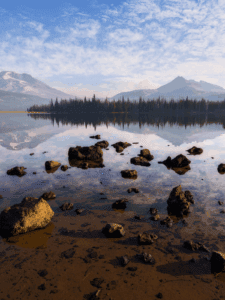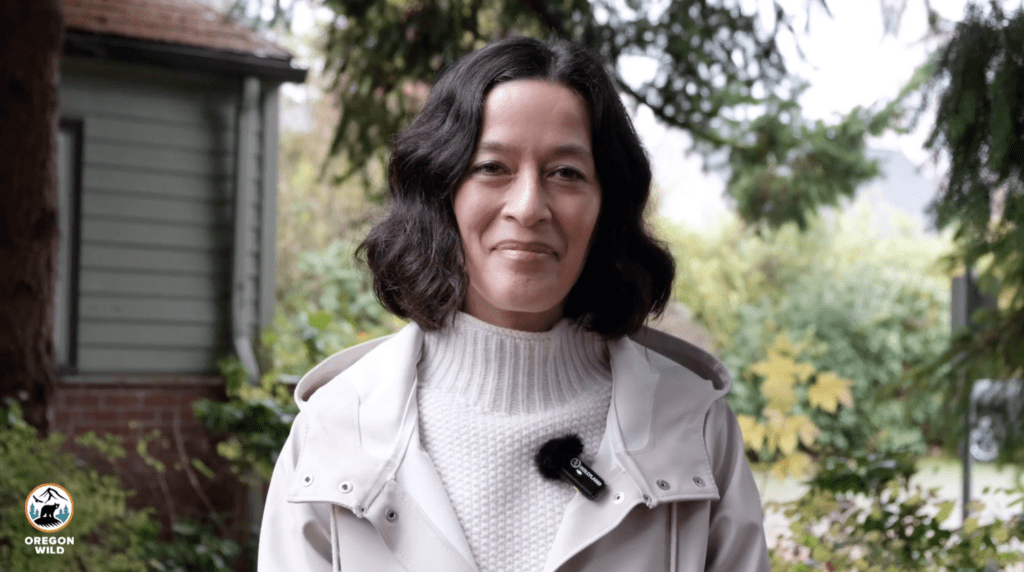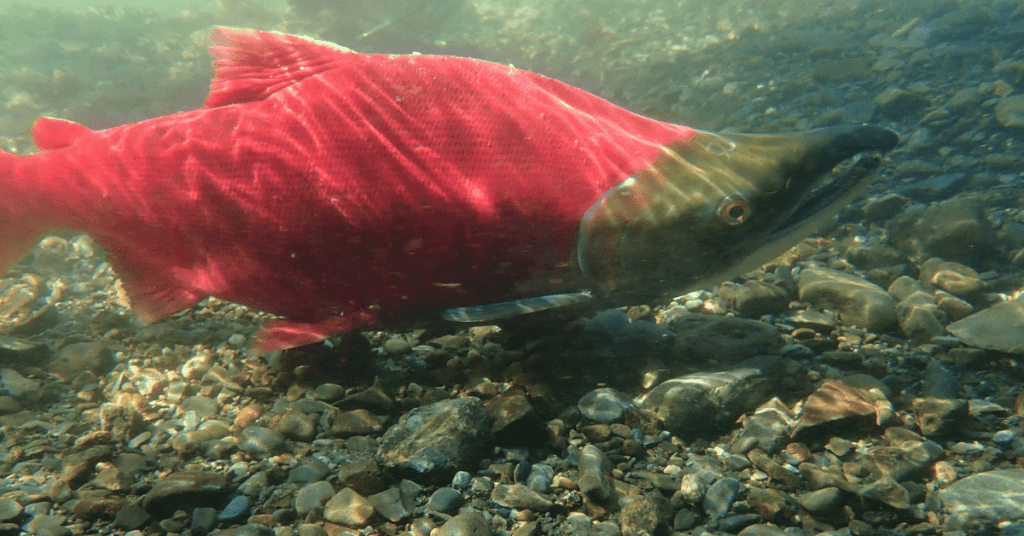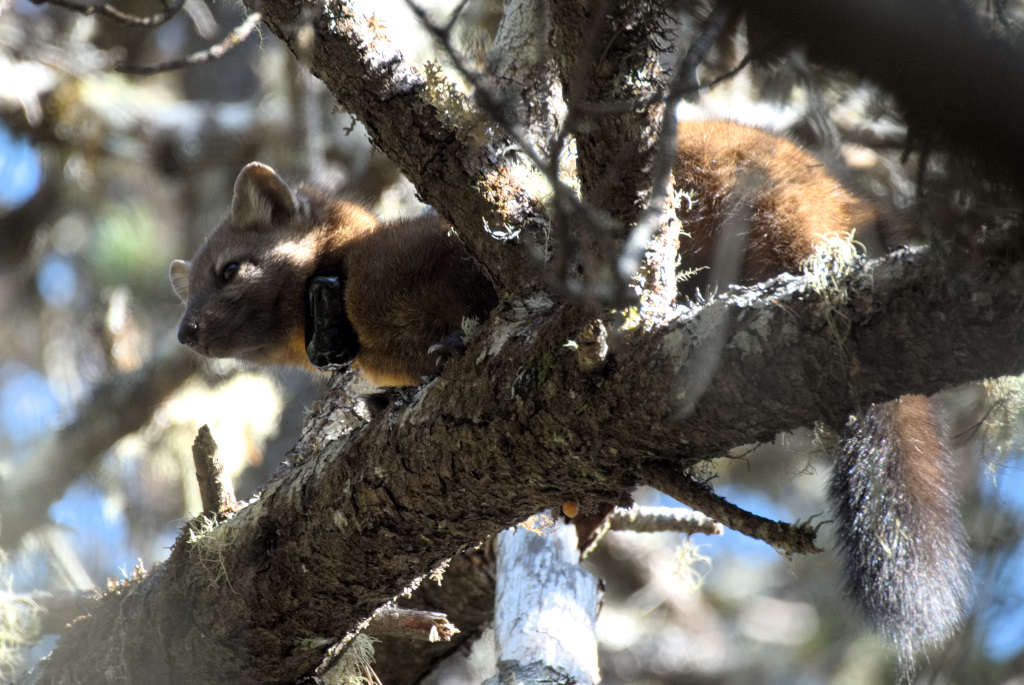Now it is up to the US Forest Service to listen.
Our public lands forests are important – for fish and wildlife, clean drinking water, recreation, and, of course, the climate. Unfortunately, they are viewed by the agencies that manage them – the Forest Service and Bureau of Land Management (BLM) – as primarily places where commercial logging is the dominant objective.
The past 2 years have presented an opportunity to change this view and establish meaningful protections for our public forests. To date, concerned people from all over the country have written in over one million times since the launch of our campaign. Getting there was no easy feat – and there’s still more to do. So, how did we go from forests being largely ignored as a natural climate solution, to over a million people taking action for their permanent protection?
When we think about climate change, we often hear about fossil fuel use—mining, drilling, and fracking—all of which create CO2 emissions that drive global warming. But here in Oregon, a surprising contributor often gets overlooked: logging. Studies show that logging is the leading cause of climate emissions in the state, and forests globally store more carbon than all exploitable fossil fuel deposits combined. Avoiding forest carbon emissions from logging is just as crucial as stopping fossil fuel use.
The Pacific Northwest’s vast landscapes are home to towering trees, some centuries old. These trees hold enormous amounts of carbon, slowing climate change by keeping it out of the atmosphere. The oldest trees are the most effective, yet they are often the first targeted for aggressive logging. After decades of aggressive logging, most of the remaining mature and old-growth trees can be found on federal public lands managed by the US Forest Service and the Bureau of Land Management. Though these lands are essential for clean water, air, recreation, and wildlife habitat, timber interests continue to profit from their destruction.
A look back: The Biden Administration offers a permanent pathway to safeguard our oldest public forests
In 2022, after years of fighting bad timber sales, the Climate Forests campaign successfully pushed for President Biden’s Executive Order on Strengthening the Nation’s Forests. The EO recognized the importance of protecting mature and old-growth forests in the fight against climate change. It was a historic step forward, acknowledging that conserving mature forests is critical for allowing younger trees to grow into old-growth, reversing centuries of destructive logging.
Hitting the streets, the river, the internet, and the White House
In response, our movement mobilized. Forest defense groups across the country banded together, organizing rallies in the forests, on rivers, and in cities. In Oregon, over 100 “kayaktivists” paddled on the McKenzie River to protest the Flat Country timber sale, which threatened the watershed and nearby mature forests. This particular timber sale was later withdrawn by the agency, cited as being “incongruent” with the directives from the President. Similar actions took place in Alaska, Montana, West Virginia, and beyond, drawing attention to the urgent need for forest protections ahead of key international climate summits.
The public also took action. More than 144,000 people submitted comments to the Forest Service in 2022, demanding strong protections for mature and old-growth trees. This momentum continued into 2023, as activists marked the one-year anniversary of Biden’s EO with flash mobs, creative signs, and protests highlighting the 370,000 acres of public forests still at imminent risk of logging.
When the Forest Service released a proposed rulemaking notice later in 2023, it was clear that while the agency was starting to address public concerns, the protections were insufficient. The proposal still allowed old-growth logging as long as it wasn’t primarily for profit, a loophole “large enough to drive a logging truck through.”
To underscore the broad support for forest protections, we teamed up with environmentalist drag queen Pattie Gonia. Donning a gown inspired by our majestic old-growth forests, Pattie staged a photo shoot in a clear-cut area of public land, symbolizing the urgency of forest conservation. This collaboration culminated in a diverse rally in Washington, D.C., where we marched to the White House and met with members of Congress, calling for stronger, permanent protections.
By mid-2023, our efforts had generated more than 530,000 public comments calling for permanent protections for these vital ecosystems. To build on this momentum, Oregon Wild organized listening sessions, providing a platform for voices that the Forest Service had initially ignored. Community members, scientists, and activists from all over the country participated, sharing personal stories and expert testimony about the importance of mature and old-growth forests. We couldn’t have done this without the support of some of our key allies: Alex Haraus (TikTok’s most-followed environmental advocate), Cascadia Wildlands, 350 Eugene, FUSEE, Great Old Broads for Wilderness, and of course, our friends at Environment America, Earthjustice, Sierra Club, and NRDC, just to name a few!
The National Old Growth Amendment presents the biggest opportunity for protecting our oldest forests in decades
In December 2023, the Forest Service issued a National Old Growth Amendment, outlining proposed changes to land management plans across the country. However, the amendment fell short—failing to adequately protect mature forests and leaving loopholes for continued logging. In response, more than 330,000 additional public comments were submitted, urging revisions to close these loopholes and safeguard mature forests from destruction.
As part of our continued efforts to raise awareness, we supported director Alex Haraus in launching the documentary “Crown Jewels,” which tells the story of the last ancient forests on US public lands. The film showcases the cultural, environmental, and scientific significance of these irreplaceable ecosystems and the urgent need for their protection. This free film has been watched thousands of times online, and over 30 screenings across the country brought more than 1,000 people together in person to watch the film, write letters to the Forest Service, and join the fight to save our forests.
The public has spoken clearly throughout this process: In the age of climate change, we cannot afford to lose our old-growth forests. These trees are essential for sequestering carbon, protecting biodiversity, and ensuring clean air and water. They belong to all of us, and their protection is critical for future generations.
Now, it is up to the US Forest Service to listen.






